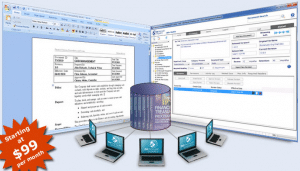How Do You Successfully Transition to a Hybrid Workforce?

We’re not at the point where a workforce can nor should be fully automated. However, a partially automated business is more realistic for a hybrid workforce. How do you successfully transition to a hybrid workforce?
Navigating the Transition to a Hybrid Automated Workforce 
When humans work alongside robots, artificial intelligence, and automation tools, it can elevate a company on many levels. That said, automating more processes in your business must be done strategically for your efforts to be successful. Navigating to a hybrid workforce transition can be much more manageable with the following tips.
Understand Automation, AI, and Robotics and Their Roles in a Partially Automated Workforce
Automation tools refer to technology that requires little human help to complete tasks. Artificial intelligence allows a digital system or machine mimics processes and functions that usually require human intelligence. Finally, robots are machines that can perform physical tasks on behalf of humans.
These technologies can increase efficiency, improve safety, and inspire productivity through automation across your organization — but only alongside humans, not in place of them. AI, automation tools, and robots require human intervention in some capacity, hence a partially automated workflow.
Understanding how all three play a part in a partially automated workflow helps you choose the processes you want to automate and the tools you use to do it wisely.
Carefully Choose Which Procedures to Automate

When you use our online document management system, procedures, records, and rights to use or edit them are managed within the web-based system. Deployment — and control — become very easy.
Automating as many systems and processes as possible seems like a good idea in theory. However, the reality is that you can’t automate every task in your business, nor should you.
For example, trying to resolve complex customer interactions with a chatbot isn’t going to work. You shouldn’t try to mimic creative thinking and quality control with AI or robotics either. These things require a human element that is yet to be duplicated in automation tools.
On the other hand, you’ll get better results automating repetitive, simpler actions and tasks that don’t require a human mind and emotions to fuel them. For instance, you can use automation in recruitment and in the onboarding process.
You can automatically send out emails reminding new hires to complete necessary HR paperwork, trigger performance reviews at specific milestones, and schedule introductions with managers and coworkers. Once you choose which procedures to automate, do deep research on the tools most suitable for carrying out the automation.
Do Deep Research
Identifying which processes are best to automate in your operation is only part of the work. The next step is choosing specific tools to help you carry out that automation. That’s where deep research is required.
Spend ample time researching specific automation tools, AI, and robotics with the potential to enhance the way your human workers perform and the efficiency of your entire company. A smooth transition to a partially automated workforce isn’t possible if the tools you choose don’t make sense for your selected processes and to the workers behind them.
When you’ve selected the processes you want to automate and the tools you plan to use to carry out that automation, define the changes your employees will face.
Define How the Transition Will Shake Things Up for Your Team
Things will change for your team when you use automation to elevate your workplace. They’ll need new skills to work with technology in their respective roles. You may have to eliminate some jobs and come up with new ones. You may also have to adjust each person’s responsibilities.
Defining how the transition will shake things up for your team and openly communicating with them about these changes is essential to a seamless transition to a hybrid automated workforce.
It’s also crucial to consider how you’ll help your employees navigate the above changes.
Consider the Uniqueness of Each Employee
Each employee will experience the transition to a partially automated workforce differently. From how they pick up the technology to how they feel about the transformation to what they need to thrive through it, you must look at the uniqueness of each employee.
One-on-ones aren’t a bad idea when figuring out how to get each employee to the other side of the transition. Leave these meetings with an action plan for each person on your team.
Ensure you also provide adequate employee training to help them fully embrace the transition to a hybrid automated workforce.
Provide Adequate Training 
Blindly dropping your employees in the middle of a partially automated workforce is a terrible idea. You’ll risk their safety, productivity, and the entire flow of your operation.
Instead, provide them with the training necessary to use the tools you implement effectively. Training your employees on how to work well with machines and software is also essential. Combining online and in-person training sessions is the best to ensure a well-rounded education on how to excel in your hybrid automated workforce.
Transition to a Hybrid Automated Workforce
Successfully navigating a transition to a hybrid automated workforce is easier than most people think and positions you for a flourishing future in your respective industry. Use the best practices above to make your transition an effortless one.















Leave a Reply